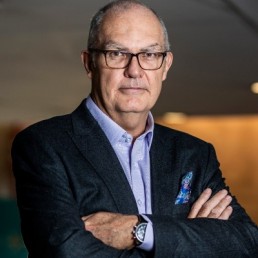What follows is a summary of the meeting of the IDC Digital Leadership Community (DLC) held on September 2, 2021. CIOs and other digital leaders from many countries across Europe joined the conversation to share their experiences around restructuring and reorganising IT teams.
To kick off the debate, IDC invited one of the UK’s leading CIOs from the healthcare community, Martin Sadler. Sadler is CIO of the Sandwell and West Birmingham National Health Service Trust, and has led a significant reorganisation of the IT function since he joined in 2018.
His first comment was that on joining an organisation, his first act is to understand what the core business is and what is the single most important thing it does. This may seem like an obvious statement, but from his experience it’s not always obvious from the way the organisation behaves. He cited the Health Service as an example — the flow of patients through the system is the most important thing, and keeping that in mind informs all future decisions around an IT restructure.
He also talked about focusing on the customer experience — regardless of SLAs and process. His approach is to look further than the process, to understand what happens when users need help from the IT team and whether the interface into the IT department is helpful or not. His preference is for evolution rather than revolution in the IT team, removing the blockers from people doing a great job, reducing “unnecessary work” and changing the culture of IT in the business.
As the discussion continued, another highly experienced CIO from the Benelux countries gave a counterpoint to this — his organisation needed to move quickly to become a digital alternative/partner to the existing business and the key thing was a culture of continuous change. This required a product-centric approach with product owners from the “business” areas and a more holistic relationship between IT and the rest of the company.
An example was provided from a previous IDC CIO summit, and a presentation from a digital movie studio, where animated films quickly moved to be a technological effort from an artistic one, leaving many cartoon artists out of the loop, since the animation tools needed high technological skills from the user. This needed a rethink of how artists and animators worked together, but over time the animation tools became sophisticated enough that the artists could once again be the master of the creation process. The group saw a lot of parallels in this across many technology types, and the discussion then centred on the reasons for change and evolution in an IT team.
The question of managing stakeholders was discussed in the later part of the meeting — any change of structure in an IT team is bound to impact the experience of those who work closely with the team, and this must be addressed and any opportunities or concerns built into the programme of change. A CIO on the call took this point and extended it to the company leadership. As an experienced interim he pointed out that CIOs are often asked to do the impossible when coming into a business and getting a realistic set of objectives from the board is an important step. This can be done in many ways, but often needs a creative approach.
The conversation continued with several viewpoints being aired and a great deal of value exchanged. The final word went to Martin Sadler, on the benefit of a successful reorganisation. Once business starts to trust an IT team, they are involved in more conversations, the IT team are happier and have better relationships with their stakeholders and colleagues, and eventually they simply get more done. Something that every company can no doubt aspire to.
The IDC Digital Leadership Community meets virtually every two weeks to discuss a topic of importance to the group, leading up to the CIO Summit on October 5, 2021. Please get in touch if you’re an IT leader in a European organisation so that we can invite you to be part of our conversation.

